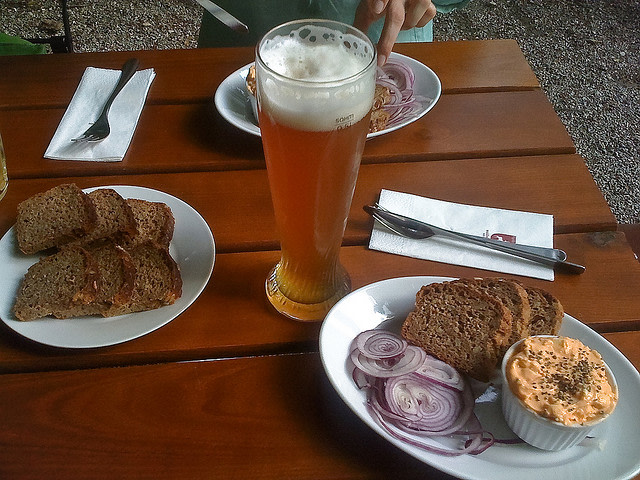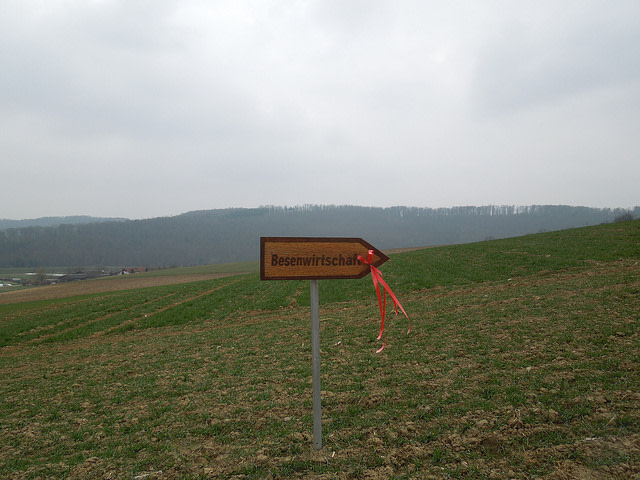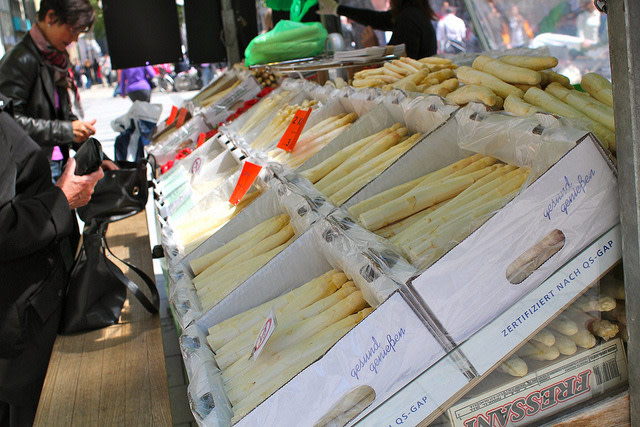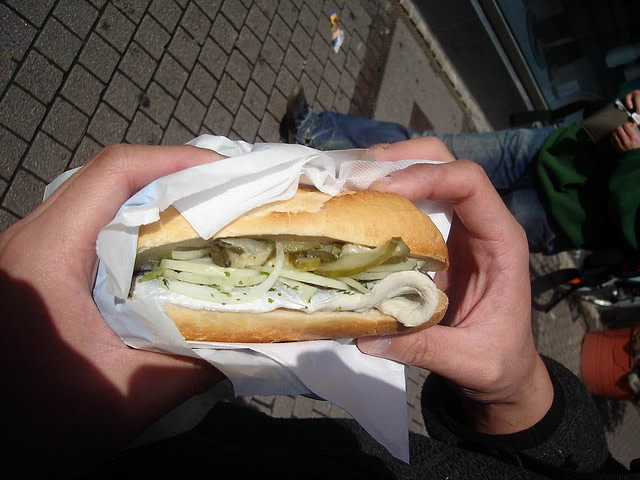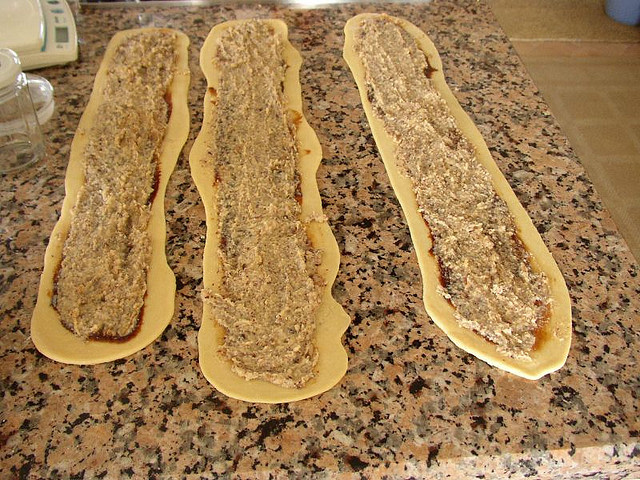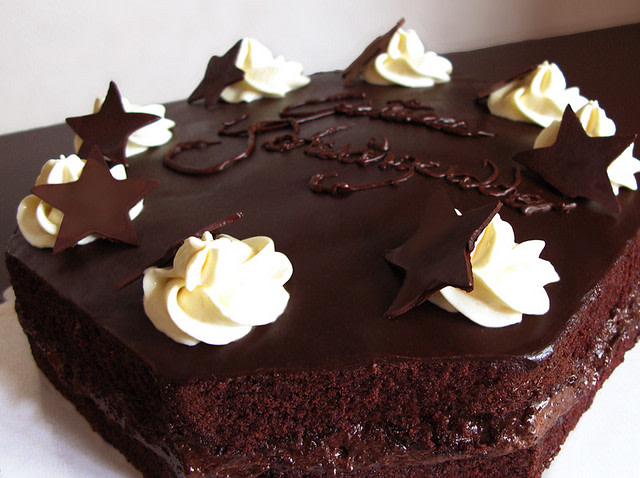| 7 mins read
There are many reasons why people go on holiday, such as culture or a change in climate. But if culinary delights are top of your agenda, a trip to Germany will appeal to anyone ranging from discerning foodies to insatiable carnivores. A German tour guide will assure you that a trip to this country involves more than sampling just pretzels and sausages. Here are seven of the best food experiences in Germany:
1) Sausages for all cities!
Germans take their sausages very seriously, and consequently there are over 1500 varieties to choose from. For centuries families have been carefully passing down recipes and tips to the next generation. The parsley filled Weisswurst is synonymous with the raucous celebrations of the world famous Oktoberfest in Munich; these are accompanied by freshly baked pretzels, sweet mustard and of course as much Bavarian beer as you can consume. Another world class sausage is the Thuringer Bratwurst, whose delicious pork recipe dates back to 1404. Most German regions have their own sausages, so you could actually grab a map and tour on the basis of sausages alone! Some of these include the Frankfurter, Bockwurst, Knacker, Kaesekrainer, Blutwurst, Mettwurst and the Leberwurst. Berlin and the Ruhr regions are the stronghold of the Currywurst, which comes with chips, its own secret curry sauce, plus Schranke (meaning “barrier”), which is a mixture of ketchup and mayonnaise.One supermarket, Edeka, hit the headlines in recent years for producing “male” and “female” sausages, with the female ones being smaller, made of better quality meat, therefore more expensive!
2) Beer garden feasts
Germany’s famous beer gardens have a long and interesting history. In former times the beer was stored deep down in enormous beer cellars, and in order to soak up moisture in the soil and provide a barricade to the summer sun, Germans discovered that planting chestnut trees helped with this. Thus the German beer garden was born and roast chestnuts sellers are a common site on the streets in the cold months. The food on offer is the perfect partner to cold beer; salty, usually quite fatty, but ever so tasty. Here are some of the essential items to try; pork knuckles, spare ribs, roast chicken, chicken wings, mackerel or trout on a stick, roast pork, Leberkase (like a pink spam meatloaf, which tastes a lot better than it sounds), Obazda (a cheese mix to be eaten with pretzels), radishes and Suelze (cubes of meat in jelly, similar to aspic).
3) Wine trail cuisine
Germany has 13 wine growing regions and is the 8th largest wine producer in the world. Similar to the beer garden experience, if you are going to try the local alcoholic brews, it makes sense to have something basic yet hearty in your belly. In the Frankfurt and Mainz regions, typical pubs at vineyards are called Strausswirtschaft or Besenwirtschaft (which translates as “broom pub”). The food to look forward to will be homemade sausages or quiches with bacon and onion. The liveliest time to visit is early summer, when for a very nominal amount of money one can sample all the new wines (Federweisser for white and Roter Rauscher for red). No doubt this is the time to mingle with the locals and practise your German singing skills!
4) Asparagus Season
April in Germany heralds excited discussions about Spargel (or asparagus), as it really signifies the beginning of springtime and the warmer weather. Asparagus can be white, green or purple, and Germans claim that it was introduced to their country by the Romans. The official asparagus capital of the world is Schwetzingen, and every year from there thousands of people flock along the Baden asparagus route. In addition to consuming vast quantities of the “vegetable of kings”, do plan to visit some extremely pretty castles, villages and fortresses in the vicinity.
5) North coast seafood
The north of Germany has its own very special cultural identity and a lot in common with the Scandinavian neighbours. In Germany’s second largest city, Hamburg, the proximity to the North Sea and the River Elbe, and hence its abundant supply of seafood has influenced the local cooking immensely. For the best sights and smells take a wander through the famous Hamburg Fish Markets and try some pickled Bismarck Herring, which is a delicacy all over the Baltic, Holland and the Slavic countries. At Germany’s most northerly state, Schleswig-Holstein, one can visit the town of Glueckstadt to sample their famous salted herrings, which are prepared on the fishing boats using a method which is over 600 years old. Likewise, in October the town of Husum plays host to a famous crab festival, which includes a crab shelling competition!
6) German breads
Bread has been around for over 10,000 years and Germany bakes more bread than any other country. In fact Germany has more than 12,000 varieties of bread roll and over 3,000 varieties of dark and white loaves. Some of the varieties include Bauernbrot (Farmer’s Bread), Dreikornbrot (three grain bread), pumpkin bread and Hefekranz (yeast bread). The iconic pretzel was actually made by mistake in 1839, when a baker in Munich accidentally used sodium bicarbonate, instead of sugar water. Bread is more than a food in Germany, but a way of life, so much so that bakers are trying to gain UNESCO cultural protection, claiming that their craft symbolises their country’s cultural heritage.
7) Sugar and Spice
With a delicious selection of sweet treats in its repetoire, you could plan a tour of Germany based on cakes, biscuits and pastries alone! In the eastern state of Saxony, the city of Leipzig boasts of having Germany’s first ever coffee shop, which they teamed with cake and started a huge Kaffee und Kuchen tradition, so integral to German culture. Lubeck in the north of Germany is famous for being the “marzipan capital of Germany” and the sugary almond mix is particularly popular around Christmas time. If you read Hansel and Gretel as a child, make sure you visit one of Germany’s many Christmas markets, where the aroma of gingerbread and spiced mulled wine will instantly warm you in the chilly air. Some of the best markets are in Cologne, Dresden, Berlin and Stuttgart, which is also world famous for its succulent black forest gateau, or Schwarzwaelder Kirschtorte as it is known locally. Another essential sweet treat to try in Germany is the strudels, such as zesty apple strudel, which is delicately mixed with cinnamon and cloves, or even the toasty nutty flavour of Mohntorte, which is made of poppy seeds.
A trip to Germany will have your taste buds in a frenzy and no doubt your waistline bulging, but don’t worry, Germans love to be outdoors and active. Why not ensure you work off those calories by hiring a German tour guide to take you a walking tour.. planned around all the best hidden eateries in town of course!
Image Details and Licenses: https://flic.kr/p/fAebhB (Caitriana Nicholson, CC BY-SA 2.0), https://flic.kr/p/6BqjGd (Boris Ott, CC BY-NC 2.0), https://flic.kr/p/rRfMQa (☮, CC BY-SA 2.0), https://flic.kr/p/carXjy (Sarah-Rose, CC BY-ND 2.0), https://flic.kr/p/iNDDL (Yun Huang Yong, CC BY 2.0), https://flic.kr/p/Ey6bG (kochtopf, CC BY-NC-ND 2.0), https://flic.kr/p/2aM51t (Mark Manguerra, CC BY-NC-ND 2.0)



